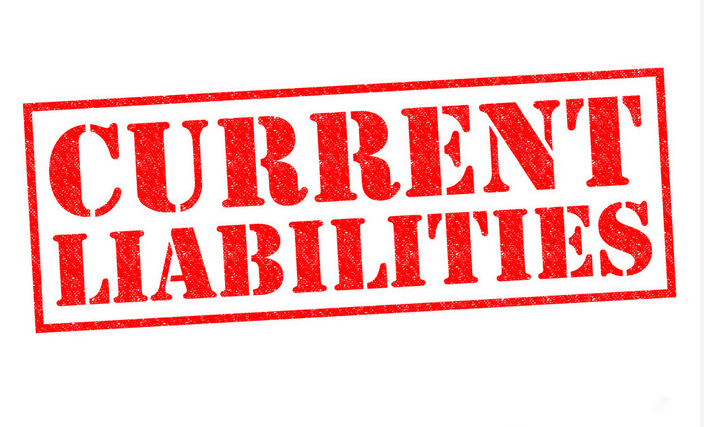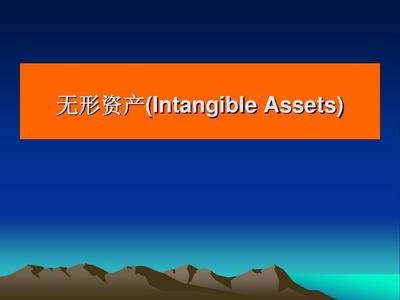
财报术语Goodwill
Goodwill
商誉
By Marshall Hargrave
Reviewed By Amy Drury
Updated Apr 30, 2020
编写人:Marshall Hargrave
审核人:Amy Drury
于2020年4月30日更新
What Is Goodwill?
什么是商誉?
Goodwill is an intangible asset that is associated with the purchase of one company by another. Specifically, goodwill is the portion of the purchase price that is higher than the sum of the net fair value of all of the assets purchased in the acquisition and the liabilities assumed in the process. The value of a company’s brand name, solid customer base, good customer relations, good employee relations, and proprietary technology represent some reasons why goodwill exists.
商誉属于无形资产,与一家公司被另一家公司收购有关。更确切地说,商誉是收购价的一部分(当收购价高于收购过程中全部收购的净资产公允价值与承担的负债公允价值之和时)。从公司的品牌名称价值、雄厚的客户基础、良好的客户关系、良好的员工关系和专利技术等方面可以获知商誉存在的原因。
Key Takeaways
关键要点
· Goodwill is an intangible asset that accounts for the excess purchase price of another company.
· 商誉属于无形资产,是收购公司支付的超额收购价。
· Items included in goodwill are proprietary or intellectual property and brand recognition, which are not easily quantifiable.
· 商誉包括专利或知识产权和品牌认知度(无法轻易计量)。
· Goodwill is calculated by taking the purchase price of a company and subtracting the difference between the fair market value of the assets and liabilities.
· 商誉的计算方法如下:公司的收购价减去资产公平市值与负债公平市值之差。
· Companies are required to review the value of goodwill on their financial statements at least once a year and record any impairments. Goodwill is different from most other intangible assets, having an indefinite life, while most other intangible assets have a finite useful life.
· 按照要求公司每年需要对其财务报表所载商誉价值至少进行一次审核,并记录出现的任何减值。商誉与其他大部分无形资产不同,商誉的使用寿命不确定,而其他大部分无形资产的使用寿命有限。
Understanding Goodwill
了解商誉
The process for calculating goodwill is fairly straightforward in principle but can be quite complex in practice. To determine goodwill in a simplistic formula, take the purchase price of a company and subtract the net fair market value of identifiable assets and liabilities.
商誉的计算过程原则上相当简单,但实际上却十分复杂。商誉的简单计算公式为:公司的收购价减去可辨认净资产公允价值与负债公允价值之差。
Goodwill = P-(A-L), where: P = Purchase price of the target company, A = Fair market value of assets, L = Fair market value of liabilities.
商誉=P-(A-L),其中,P=目标公司的收购价,A=资产公平市值,L=负债公平市值。
Goodwill
商誉
What Goodwill Tells You
商誉详解
The value of goodwill typically arises in an acquisition—when an acquirer purchases a target company. The amount the acquiring company pays for the target company over the target’s net assets at fair value usually accounts for the value of the target’s goodwill. If the acquiring company pays less than the target’s book value, it gains negative goodwill, meaning that it purchased the company at a bargain in a distress sale.
商誉价值通常在收购方对目标公司进行收购时出现。收购公司向目标公司支付的超过目标公司净资产公允价值的金额通常为目标公司的商誉价值。若收购公司支付的金额低于目标公司的账面价值,则获得负商誉,即廉价收购目标公司。
Goodwill is recorded as an intangible asset on the acquiring company's balance sheet under the long-term assets account. Under generally accepted accounting principles (GAAP) and International Financial Reporting Standards (IFRS), companies are required to evaluate the value of goodwill on their financial statements at least once a year and record any impairments. Goodwill is considered an intangible (or non-current) asset because it is not a physical asset like buildings or equipment.
商誉在收购公司资产负债表的长期资产账目项下记为无形资产。根据一般公认会计原则(GAAP)和国际财务报告准则(IFRS),公司每年需要对其财务报表所载商誉价值至少进行一次评估,并记录出现的任何减值。商誉被视为无形资产(或非流动资产),原因在于其并非实物资产(如建筑物或设备)。
Goodwill Calculation Controversies
商誉计算争议
There are competing approaches among accountants as to how to calculate goodwill. One reason for this is that goodwill represents a sort of workaround for accountants. This tends to be necessary because acquisitions typically factor in estimates of future cash flows and other considerations that are not known at the time of the acquisition. While this is perhaps not a significant issue, it becomes one when accountants look for ways of comparing reported assets or net income between different companies; some that have previously acquired other firms and some that have not.
对于如何计算商誉,会计师采用的计算方法相互矛盾。其中一个原因在于,商誉代表了会计师的一种变通方式。这往往是有必要的,因为收购通常包含对未来现金流和其他无法在收购时获知的事项的评估。虽然这可能不重要,但是当会计师寻找比较不同公司所载资产或净收入的方法时却很重要;一些公司之前已经收购了其他公司,而另一些公司却没有。
Goodwill Impairments
商誉减值
Impairment of an asset occurs when the market value of the asset drops below historical cost. This can occur as the result of an adverse event such as declining cash flows, increased competitive environment, or economic depression, among many others. Companies assess whether an impairment is needed by performing an impairment test on the intangible asset.
若资产的市场价值低于原始成本,资产会减值,其原因在于不良事件如现金流下降、日益激烈的竞争环境、或经济萧条等。公司通过无形资产减值测试评估是否需要减值。
The two commonly used methods for testing impairments are the income approach and the market approach. Using the income approach, estimated future cash flows are discounted to the present value. With the market approach, the assets and liabilities of similar companies operating in the same industry are analyzed.
两种常用的减值测试方法分别为收益法和市场法。收益法是把估计的未来现金流贴现为当前现值。市场法是分析同一产业下类似公司的资产和负债。
If a company's acquired net assets fall below the book value or if the company overstated the amount of goodwill, then it must impair or do a write-down on the value of the asset on the balance sheet after it has assessed that the goodwill is impaired. The impairment expense is calculated as the difference between the current market value and the purchase price of the intangible asset.
若公司的收购净资产低于账面价值或公司夸大了商誉价值,公司必须在评估商誉减值之后调低资产负债表所载资产价值。减值费用为无形资产的现行市场价值与收购价之差。
The impairment results in a decrease in the goodwill account on the balance sheet. The expense is also recognized as a loss on the income statement, which directly reduces net income for the year. In turn, earnings per share (EPS) and the company's stock price are also negatively affected.
减值会导致资产负债表所载商誉账目减少。减值费用也被视为损益表上的损失,直接致使本年度的净收益减少。反过来,每股收益(EPS)和公司的股票价格也会受到负面影响。
The Financial Accounting Standards Board (FASB), which sets standards for GAAP rules, is considering a change to how goodwill impairment is calculated. Because of the subjectivity of goodwill impairment and the cost of testing impairment, FASB is considering reverting to an older method called "goodwill amortization" in which the value of goodwill is slowly reduced annually over a number of years.
美国财务会计准则委员会(FASB)是制定GAAP准则的机构,正在考虑改变商誉减值的计算方法。考虑到商誉减值具有主观性以及减值测试的成本,FASB正在考虑恢复使用以前的方法,即商誉摊销,也就是说若干年来,商誉的价值每年都会缓慢减少。
Goodwill vs. Other Intangibles
商誉与其他无形资产
Goodwill is not the same as other intangible assets. Goodwill is a premium paid over fair value during a transaction and cannot be bought or sold independently. Meanwhile, other intangible assets include the likes of licenses and can be bought or sold independently. Goodwill has an indefinite life, while other intangibles have a definite useful life.
商誉与其他无形资产不同。商誉是交易时超过公允价值的溢价,无法单独购买或出售。其他无形资产包括许可证等,可以单独购买或出售。商誉的使用寿命不确定,而其他无形资产的使用寿命有限。
Limitations of Using Goodwill
商誉使用的局限性
Goodwill is difficult to price, and negative goodwill can occur when an acquirer purchases a company for less than its fair market value. This usually occurs when the target company cannot or will not negotiate a fair price for its acquisition. Negative goodwill is usually seen in distressed sales and is recorded as income on the acquirer's income statement.
商誉难以定价,而且收购方以低于目标公司的公平市值对其进行收购时会出现负商誉。这种情况通常在目标公司无法或将不会对收购的公平价格进行商议时出现。负商誉一般在廉价出售中出现,在收购方的损益表中被记为收益。
There is also the risk that a previously successful company could face insolvency. When this happens, investors deduct goodwill from their determinations of residual equity. The reason for this is that, at the point of insolvency, the goodwill the company previously enjoyed has no resale value.
而且还存在一种风险,之前成功的公司可能会面临破产。当这种情况发生时,投资人会从其确定的剩余权益中扣除商誉,因为濒临破产时,公司之前享有的商誉就失去了转售的价值。
Example of Goodwill
商誉的示例
If the fair value of Company ABC's assets minus liabilities is $12 billion, and a company purchases Company ABC for $15 billion, the premium value following the acquisition is $3 billion. This $3 billion will be included on the acquirer's balance sheet as goodwill.
若ABC公司的资产公允价值减去负债公允价值等于120亿美元,且另一公司以150亿美元收购ABC公司,则收购后的溢价为30亿美元。该30亿美元将在收购方的资产负债表中记为商誉。
As a real-life example, consider the T-Mobile and Sprint merger announced in early 2018. The deal was valued at $35.85 billion as of March 31, 2018, per an S-4 filing. The fair value of the assets was $78.34 billion and the fair value of the liabilities was $45.56 billion. The difference between the assets and liabilities is $32.78 billion. Thus, goodwill for the deal would be recognized as $3.07 billion ($35.85 - $32.78), the amount over the difference between the fair value of the assets and liabilities.
例如,T-Mobile和Sprint在2018年初宣布合并。根据S-4表格可知,截止2018年3月31日该交易估价358.5亿美元。资产公允价值为783.4亿美元,负债公允价值为455.6亿美元,二者之差为327.8亿美元。所以,该交易的商誉为30.7亿美元(358.5-327.8),即超过资产公允价值与负债公允价值之差的金额。





